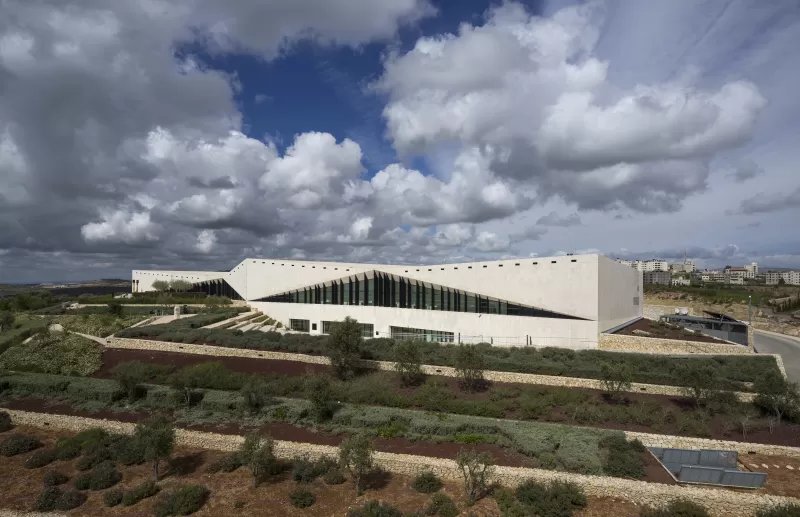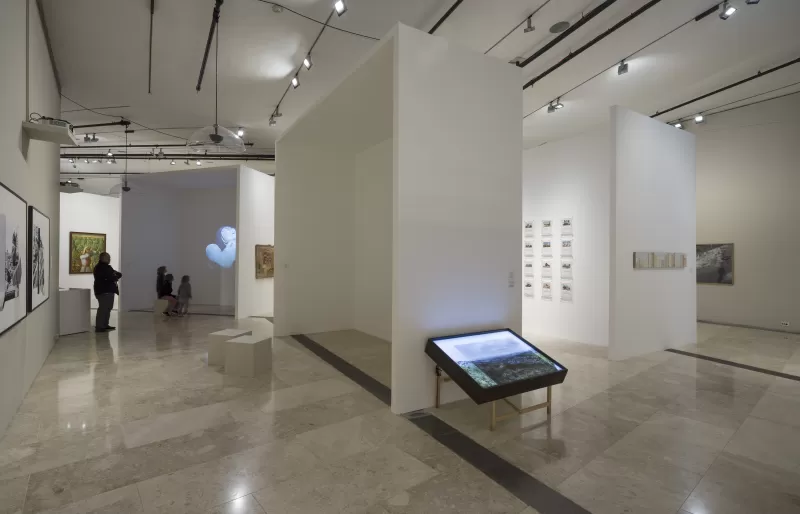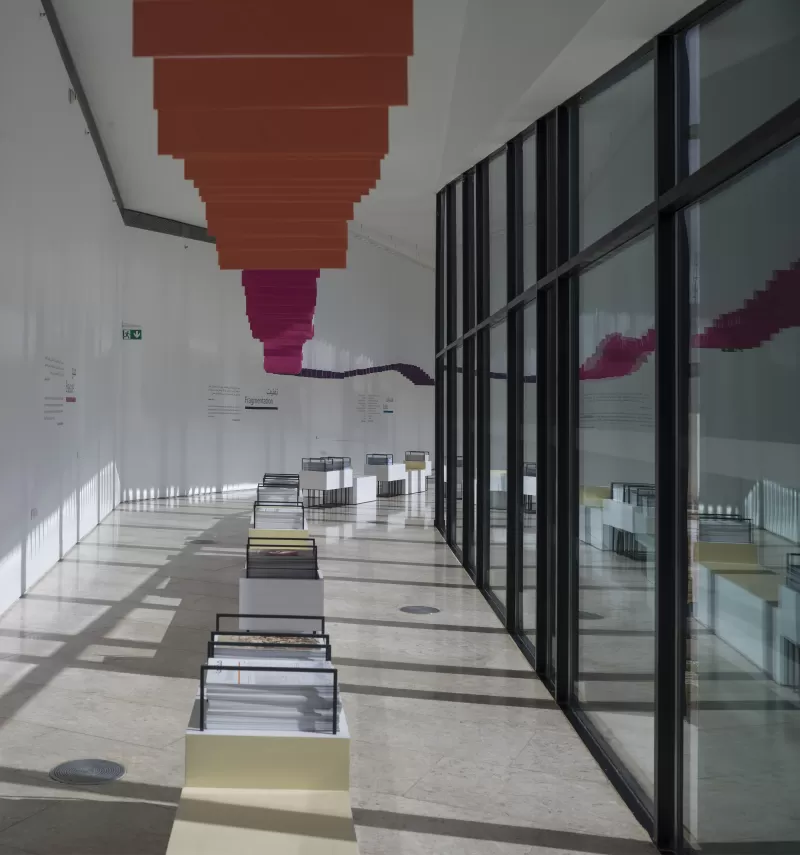Birzeit, Palestine, 25 April 2019 – The Palestinian Museum, in Birzeit, has been shortlisted for the 2019 Aga Khan Award for Architecture. The announcement was made by Farrokh Derakhshani, Director of the Award, in a ceremony in Kazan, Russia, today.
The Aga Khan Award for Architecture is one of the oldest major awards in the field of architecture. It selects projects – from slum upgrading to high-rise “green” buildings – that not only exhibit architectural excellence but also improve the overall quality of life. The Award rewards architects, but also identifies municipalities, builders, clients, master artisans and engineers who have played important roles in the realization of a project.
“The Palestinian Museum is both aesthetially pleasing and evironementally responsible,” said Farrokh Derakhshani, Director of the Award, “which promotes the idea that the marriage of design and ecological concerns are possible.”
Dr. Adila Laïdi-Hanieh, Director General of the Palestinian Museum, expressed her pride at the shortlisting of the Palestinian Museum for the Aga Khan Award for Architecture. “This is a new achievement for the Palestinian Museum. The selection will spur us to work even harder to continue developing and disseminating our programmes to match our building in its innovation and rootedness in the land of Palestine."
The Palestinian Museum, clad in local limestone, crowns a terraced hill overlooking the Mediterranean. Its design was directly inspired by the surrounding rural landscape with which it blends seamlessly. Not only does the building interact aesthetically with its environment but it also is the recipient of the LEED Gold certification as a result of its sustainable construction techniques. The gardens cascading down the edifice tell the history of Palestine’s vegetation and agriculture, whilst the interior highlights Palestinian culture in its galleries, educational and research facilities, and administrative offices. The Museum aims to promote Palestinian culture in the Arab world and internationally – not only as a memorial to its past but also as an incubator for creative projects and programmes in the present and the future.
The sites will now undergo a rigorous investigation by experts who visit and evaluate each project on-site. Their reports are the basis for the Master Jury’s selection of the eventual laureates. It should be noted that projects commissioned by the Aga Khan or any of the institutions of the Aga Khan Development Network (AKDN) are ineligible for the Award. To be eligible for consideration in the 2019 Award cycle, projects had to be completed between 1 January 2012 and 31 December 2017, and should have been in use for at least one year.
The Aga Khan Award for Architecture was established by the Aga Khan in 1977 to identify and encourage building concepts that successfully address the needs and aspirations of communities in which Muslims have a significant presence. The Award recognises examples of architectural excellence in the fields of contemporary design, social housing, community improvement and development, historic preservation, reuse and area conservation, as well as landscape design and improvement of the environment. Since the Award was launched 42 years ago, 116 projects have received the award and more than 9,000 building projects have been documented.
For information about the other 19 projects on the shortlist, please click here and the full on-line press kit, which includes briefs on each project and high-resolution images, click here.
The Aga Khan Award for Architecture is part of the Aga Khan Development Network (AKDN). It currently operates 1,000 or so programmes and institutions in 30 countries.. It employs approximately 80,000 people, the majority of whom are based in developing countries. The AKDN’s annual budget for non-profit development activities is approximately US$ 950 million. Its economic development arm, the Aga Khan Fund for Economic Development (AKFED), generates annual revenues of US$ 4.3 billion, but all surpluses generated by its project companies are reinvested in further development activities, usually in fragile, remote or post-conflict regions.


